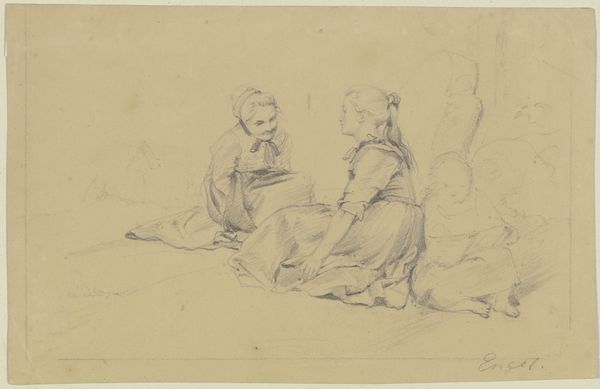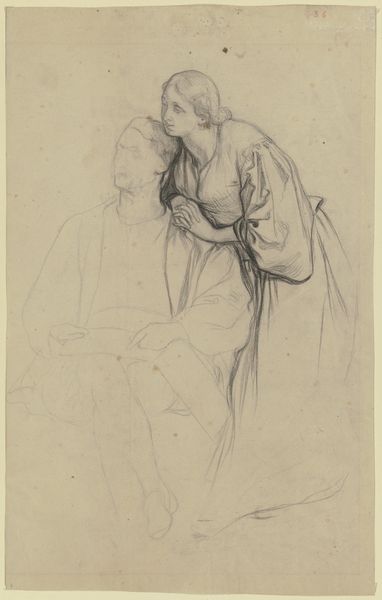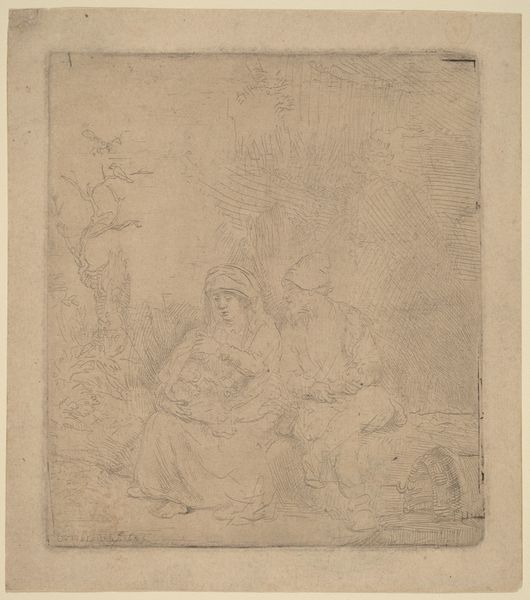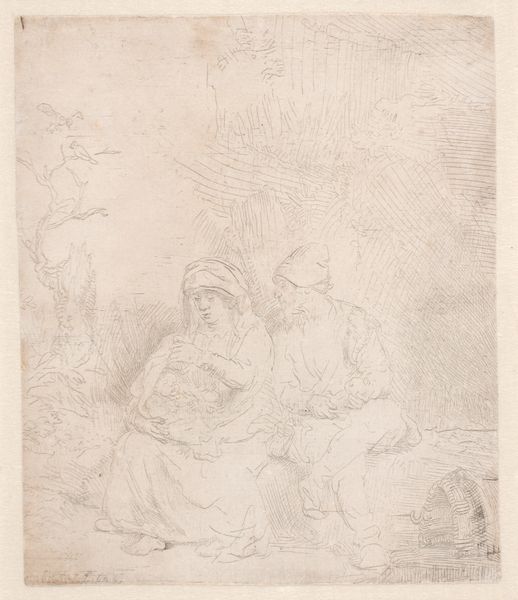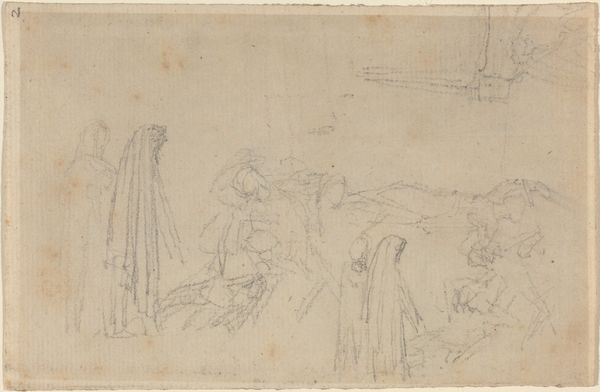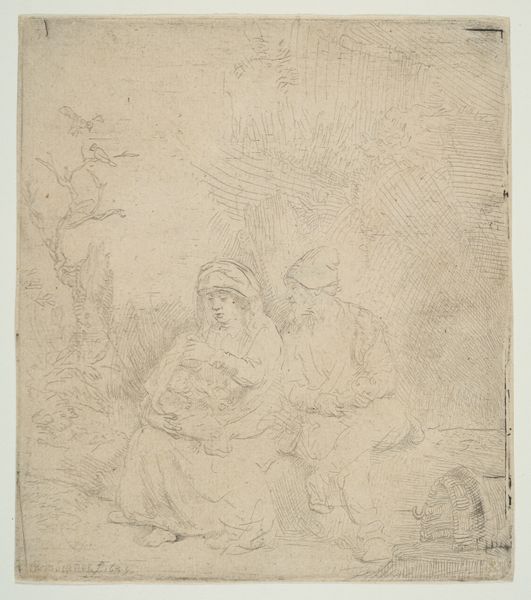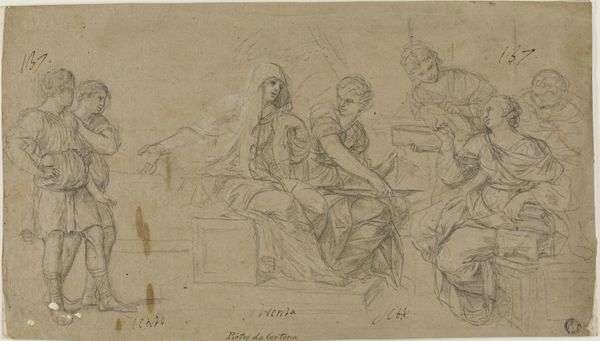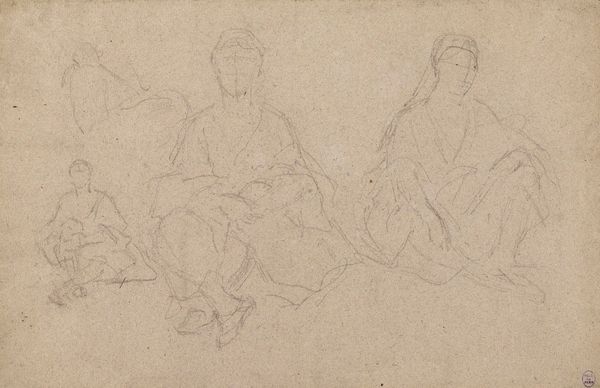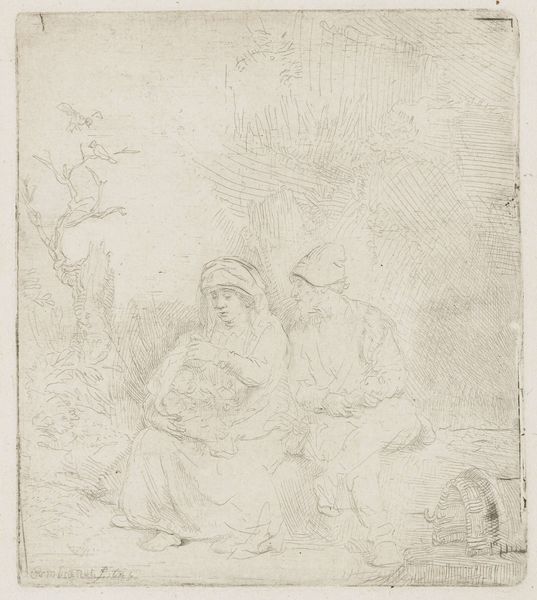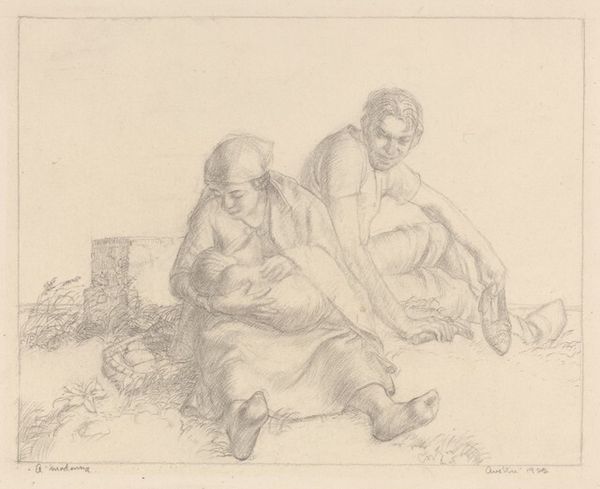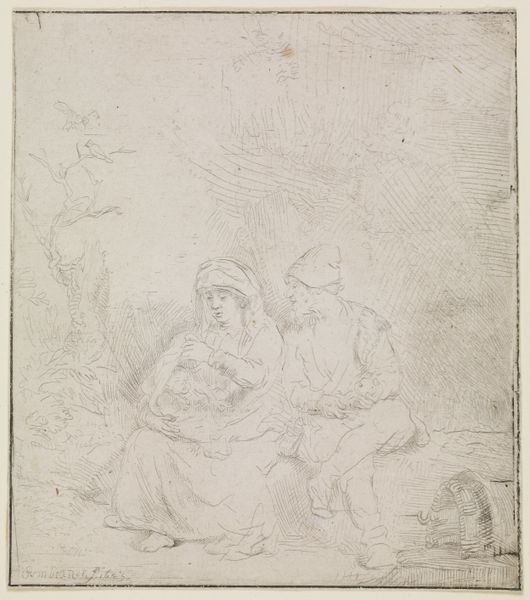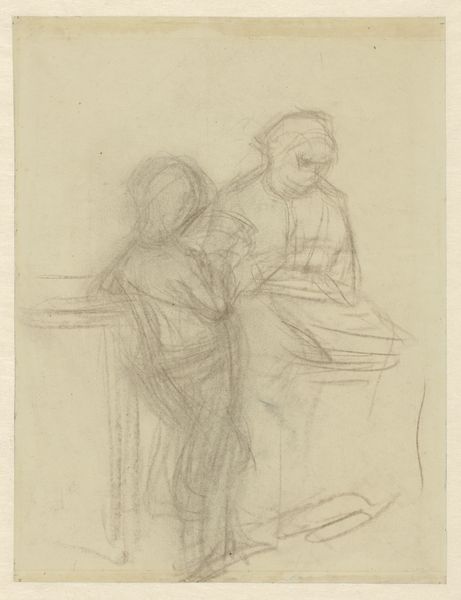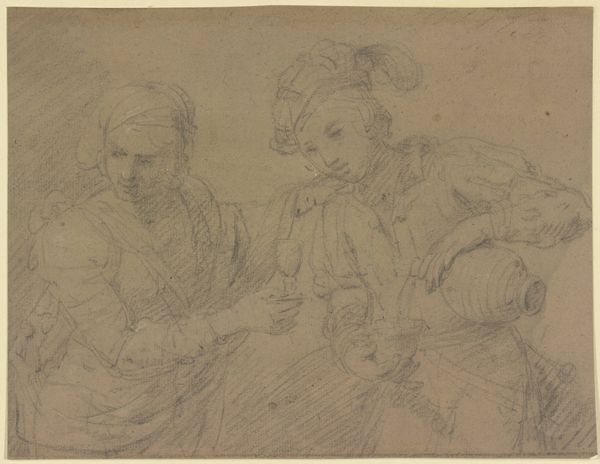
drawing, pencil
#
portrait
#
drawing
#
pencil
#
academic-art
#
virgin-mary
Dimensions: 8 3/4 x 15 1/2 in. (22.2 x 39.3cm)
Copyright: Public Domain
Curator: Gazing at Hippolyte Flandrin’s “The Nativity,” sketched in 1860, currently residing at the Metropolitan Museum of Art… well, there's an overwhelming sense of serenity. It’s tender. It’s fragile, almost…a whisper of charcoal. Editor: It’s a study, after all, a drawing using pencil; its subdued palette and linear approach strips away the grandeur we often see in Nativity scenes, bringing us closer to a human experience. The figures feel relatable, their vulnerability exposed. Curator: Exactly. There’s this raw, intimate quality that smashes against those opulent, performative displays you see plastered across Baroque ceilings. I mean, Mary looks exhausted! Not some ethereal queen, but a person recovering from childbirth. And Joseph there seems unsure; they could be any new parents! It tickles me. Editor: Right, this rendering departs from traditional iconography to portray a version of the Holy Family mired in human anxieties. What Flandrin communicates, particularly through Mary’s posture, is the physical toll of creation – but perhaps also her apprehension about the future as the mother of God, knowing how dangerous the socio-political climate can be toward marginalized or oppressed groups. Curator: That interpretation layers a powerful dimension into the drawing, lending additional poignancy to her almost downward glance. It speaks of burden, certainly. Editor: In our age of mass displacement, reflecting on the painting from a modern vantage point highlights Flandrin's sensitivity to social realities. Mary’s plight underscores broader challenges of seeking refuge and starting a new life under oppressive conditions, not too dissimilar to so many people now around the world. Curator: So the real magic here perhaps rests not just in Flandrin’s craft but his willingness to peel away the pomp, letting this universal vulnerability of parenthood radiate from the scene. That simple pencil work sparks endless depth in its meaning and message. Editor: Indeed, viewing this artwork with the historical context surrounding it helps underscore how the simplicity and sincerity Flandrin was able to capture can continue inviting complex engagement with it generations after it was made.
Comments
No comments
Be the first to comment and join the conversation on the ultimate creative platform.
